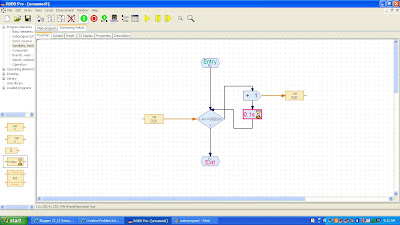RoboPro: Subprograms and Meters
-A concise sentence or two that summarizes the activityThe recent activity that we had wanted us to create subprograms, specifically one that increases the value of a variable. Here are my reults:
-Screenshots of your program that show off the subprogram and metering
-What are the benefits of using subprograms within your team development projects?
The benefits of these nice little subprograms is that it allows to provide more space to our main code, and create simple little functions that we can use a variable to define rather than recreate the entire code. That would suck. A LOT.







